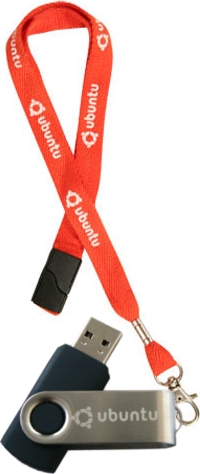Lanyard

A lanyard is a cord or strap worn around the neck, shoulder, or wrist to carry keys or identification cards. In the military, lanyards were used to fire an artillery piece or arm the fuse mechanism on an air-dropped bomb by pulling out a pin (to start the arming delay) when it leaves the aircraft. They are also used to attach a pistol to a body so that it can be dropped without being lost.
Origins

The earliest references to lanyards date from 15th century France: "lanière" was a strap-on apparatus.
Bosun's pipe, marlinspike, and small knives typically had a lanyard consisting of a string loop tied together with a diamond knot. It helped secure against fall and gave an extended grip over a small handle.
In the French military, lanyards were used to connect a pistol, sword, or whistle for signaling to the uniform. Lanyards were used by mounted cavalry on land and naval officers at sea. A pistol lanyard can be easily removed and reattached by the user, but will stay connected to the pistol whether it is drawn or in a holster.
In the military, lanyards of various colour combinations and braid patterns are worn on the shoulders of uniforms to denote the wearer's qualification or regiment. In horse regiments, lanyards were worn on the left, enabling a rider to pull a whistle from the left tunic pocket and maintain communication with his troop. Members of the British Royal Artillery wear a lanyard which originally held a key for adjusting the fuses of artillery shells.
Styles and materials
The style, design or material used will vary depending on end-purpose of the lanyard. Lanyard materials include polyester, nylon, satin, silk, , braided leather or braided paracord.
Common styles
- Polyester imprinted lanyards
- Nylon imprinted lanyards
- Tube imprinted lanyards
- Dye-sublimated lanyards or full-colour lanyards
Accessory for electronics

Lanyards are widely used with small electronic devices such as cameras and USB flash drives to prevent loss or dropping. Electronics designed to take a lanyard usually have a small through-hole built into a corner or edge of the case or anchored to the frame of the device; the corresponding lanyard generally has a loop of thread on the end that is attached to that hole with a simple knot, usually a larks head. Some earphones incorporate the audio signal into the lanyard, meaning it doubles up as headphone cords as well.
Safety strap
Lanyards are also often attached to dead man's switches or "kill switches" on dangerous machinery, such as large industrial cutting or slicing machines; on vehicles, such as jet-skis or trains; and on exercise treadmills, so that if the operator suddenly becomes incapacitated, their fall will pull on the lanyard attached to their wrist, which will then pull the switch to immediately stop the machine or vehicle.
Some law enforcement officers and members of the military utilize specialized lanyards to keep sidearms from falling to the ground during missions.
Uniform accessories
Certain lanyards are still worn on uniforms as decorations similar to an Bushman's thong or Bosun's cord.